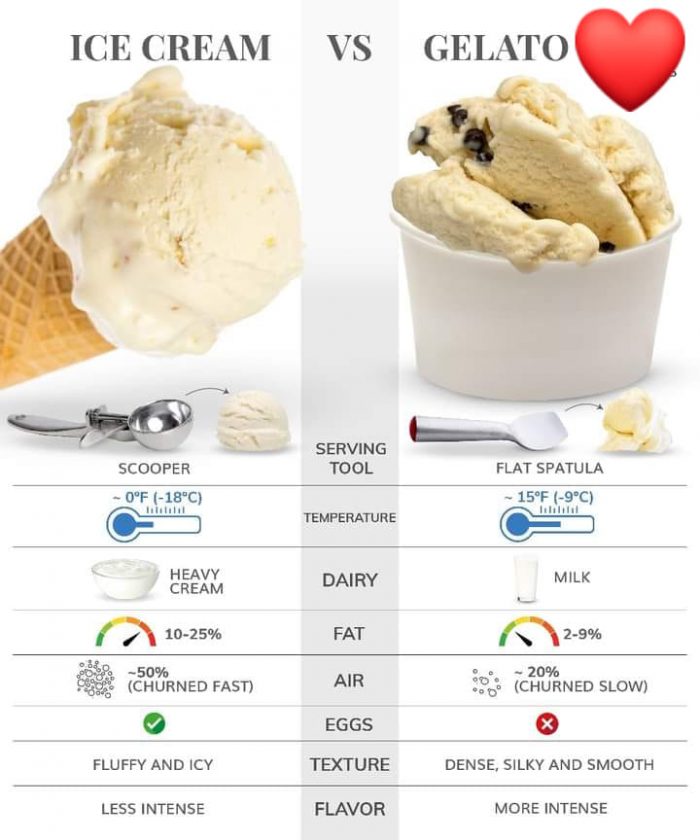
Gelato and ice cream are both delicious, but does one beat the other? Gelato is a lower-fat, denser alternative to ice cream that’s all the rage in Italy. It has less air churned into its base than traditional American ice cream and is churned more slowly. It’s also a creamier dessert with a higher concentration of milk than most American brands contain.
Gelato is a lower-fat dessert made with cream, milk and sugar.
Gelato, on the other hand, is a lower-fat dessert made with cream, milk and sugar. It’s also traditionally served at a slightly warmer temperature than ice cream–so you can expect it to be softer in texture. The reason for this difference in fat content? Gelato uses less cream than regular ice cream (which means there are fewer calories). While many people think that gelato has more calories than traditional ice creams because they’re thicker and denser than traditional soft serve or hard pack varieties of frozen treats, this isn’t actually true!
Gelato has less air churned into the base than ice cream.
This means that gelato is denser and creamier than ice cream, with a higher fat content. The reason for this is that gelato is churned more slowly than ice cream, which allows more time for water to be extracted from the ingredients. The result is that less air can be added before freezing (and therefore less air will remain). Gelato makers also use recipes that contain less milk fat than those used for making regular ice creams; this results in a lower percentage of calories coming from fat as well as giving them more control over how much water they extract from their bases during processing.
Gelato has a denser texture than ice cream.
Now that you know the difference between ice cream and gelato, it’s time to dig into how they’re made. Their textures are actually quite different. Ice cream is made with a base of cream, milk, eggs and sugar mixed together and then churned at high speeds to create lots of air bubbles that give it its lightness and creamy consistency. Gelato has less air churned into its base than ice cream does–and it’s churned more slowly too! That means there’s less fat content in gelato than in regular old vanilla (or mint chip).
Gelato contains less fat than ice cream, typically under 5 percent as opposed to 10 percent in ice cream.
You may be surprised to learn that gelato has less fat than ice cream, typically under 5 percent as opposed to 10 percent in ice cream. While this might seem like a disadvantage, it makes for a lighter texture and a more well-rounded flavor profile. Fat gives gelato its creamy texture and helps keep it from melting too quickly–but it also adds calories (and some people avoid dairy products). By reducing the amount of fat used when making gelato, there’s more room for other ingredients like chocolate or fruit purees that make your dessert truly special!
Gelato is a lighter alternative to ice cream
Gelato is a lighter alternative to ice cream, with fewer calories and less fat. It also has a denser texture than regular American-style ice cream, which means it melts more slowly in your mouth. This is because gelato contains less air than other types of frozen desserts–usually no more than 1% air, compared with 5% for most American-style ice creams. Gelato can be served either soft or hard (like sorbet), depending on what you prefer. If you like your desserts smooth and creamy, then gelato may be right for you!
While gelato and ice cream are both delicious desserts, they’re definitely not the same thing. Gelato has a lower fat content than ice cream and is churned more slowly, which makes it denser and creamier than ice cream. Gelato also contains less air than traditional American ice cream–this means that gelato will melt slower in your mouth!
